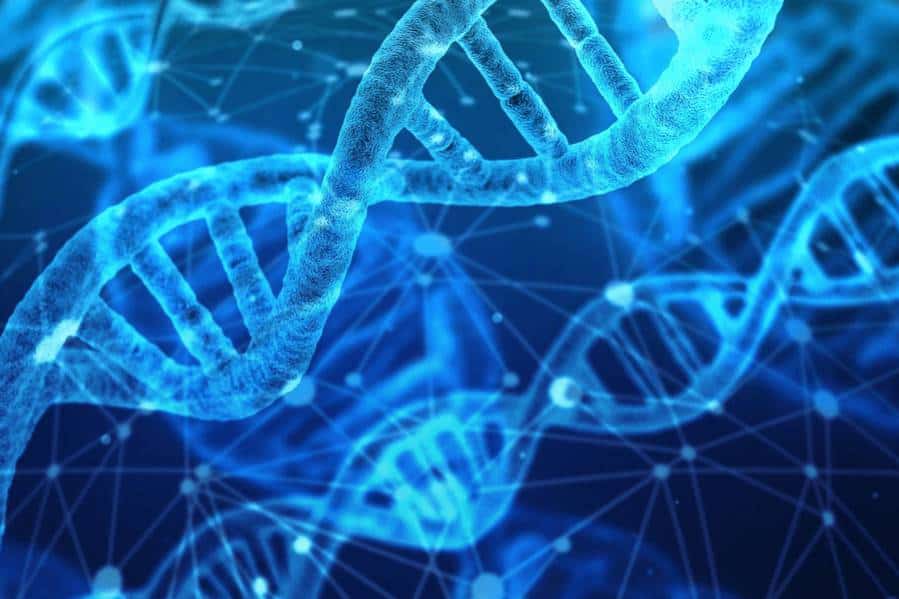Because same-sex sexual behavior does not result in offspring, evolutionary biologists have long wondered how the genes associated with this behavior have persisted in the human genome, and whether they will remain in the future.
A new University of Michigan-led study, scheduled for publication Jan. 3 in the journal Science Advances, suggests that part of the explanation—specifically for male bisexuals—has to do with risk-taking behavior.
The U-M researchers analyzed data from more than 450,000 participants of European ancestry in the United Kingdom’s Biobank database of genetic and health information. Participants responded to a questionnaire that included the question, “Would you describe yourself as someone who takes risks?”
The U-M analysis revealed that male heterosexuals who carry the genetic variants associated with bisexual behavior, which are known as BSB-associated alleles, father more children than average. Furthermore, men who describe themselves as risk-takers tend to have more children and are more likely to carry BSB-associated alleles.
These and other observations suggest that male BSB-associated alleles confer reproductive benefits because of the shared genetic variants between male bisexual and risk-taking behaviors.
“Our results suggest that male BSB-associated alleles are likely reproductively advantageous, which may explain their past persistence and predict their future maintenance,” said U-M evolutionary biologist Jianzhi Zhang, the study’s senior author.
“These results also suggest that risk-taking behavior is the underlying cause of BSB-associated alleles’ promotion of reproduction in heterosexuals. That is, the reproductive advantage of BSB-associated alleles is a byproduct of the reproductive advantage of risk-taking behavior,” said Zhang, the Marshall W. Nirenberg Collegiate Professor in the Department of Ecology and Evolutionary Biology.
The first author of the new study is U-M graduate student Siliang Song.
Risk-taking propensity usually describes a tendency to engage in reward-seeking actions despite the possibility of negative consequences. Although the UK Biobank question on risk-taking did not specify the type of risk, it is likely that self-reported risk-taking includes unprotected sex and promiscuity, which could result in more children, Zhang said.
In their analysis of the genetic underpinnings of same-sex sexual behavior, the U-M researchers looked at both bisexual behavior and exclusive same-sex behavior, which they call eSSB.
When they compared the genetic basis of bisexual behavior to the genetic basis of eSSB, they found them to be significantly different. They found that eSSB-associated genetic variants are correlated with fewer children, which is expected to lead to a gradual decline in their frequency over time.
However, the authors stress that their study looks at the genetic underpinnings of same-sex sexual behavior and not the behaviors themselves, which are affected by both genetic and environmental factors.
In fact, the proportion of UK Biobank participants reporting same-sex sexual behavior has been on the rise in recent decades, likely due to growing societal openness toward it, according to the researchers.
In addition, the authors say their new results “predominantly contribute to the diversity, richness, and better understanding of human sexuality. They are not, in any way, intended to suggest or endorse discrimination on the basis of sexual behavior,” they wrote.
The new study is a follow-up to one published in May in Proceedings of the National Academy of Sciences by Song and Zhang. That study also sought to explain the persistence of genetic variants associated with same-sex sexual behavior.
In 2021, Australian biologist Brendan Zietsch and colleagues presented evidence that heterosexuals carrying same-sex-associated alleles have more sexual partners than those not carrying the variants. This could confer a genetic advantage, the authors suggested, because more sexual partners could translate into more children.
In their PNAS study, which also relied on UK Biobank data, Zhang and Song showed that while the mechanism proposed by Zietsch likely worked in pre-modern societies, it is not active today because the widespread use of contraception has decoupled the number of offspring from the number of sexual partners in heterosexuals.
The findings presented in that PNAS paper led Zhang and Song to search for other potential mechanisms for the genetic maintenance of human same-sex behavior. That led to the Science Advances study, which was supported by the U.S. National Institutes of Health.
Study: Genetic variants underlying human bisexual behavior are reproductively advantageous (DOI: 10.1126/sciadv.adj6958)


